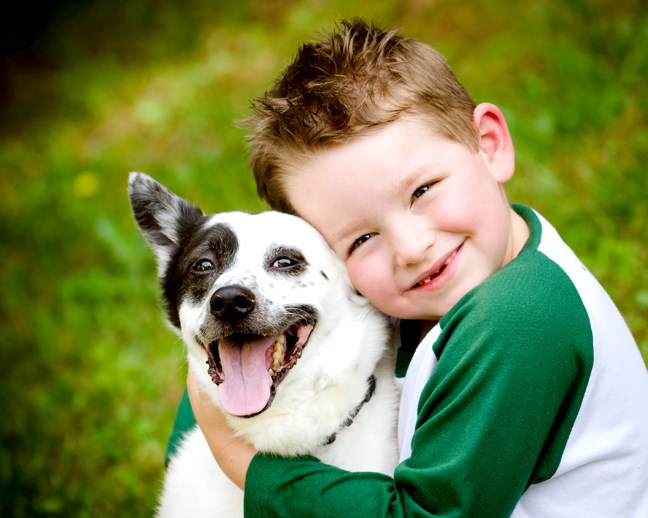Taking your dog for a walk is supposed to be the most peaceful, joyful and stress -free part of the day, but for some people it is quite the opposite.
Having a dog that is difficult to walk on leash is not only stressful, it can be physically uncomfortable. Dogs pull on leash and control the walk for one basic reason: because they have been allowed to. Owners unwittingly allow it when they have a 15-pound puppy eagerly leading the walk. They don't consider that what they are allowing now is what they will have to contend with when their dog is 70 or more pounds and much stronger.
Dogs don't naturally know how to walk on leash. It isn't part of their DNA and they are not born with the skill. It has to be taught. If you have a puppy, start now! If you have an adult dog that pulls, it can be a bit more challenging, but with patience and commitment it can be done. Regardless of age, these are steps you can take to teach your dog to walk nicely on leash.
Step one is putting the collar on. Setting the tone for the walk should begin the moment the leash and collar are picked up. Fido needs to start the walk with a peaceful mindset. Having your dog jump around enthusiastically is entertaining, but it is not the tone we want to encourage when teaching it to be calm and polite on a walk.
Using treats to get your dog focused, ask Fido to sit and stay. Fido needs to show you that he can maintain a focused and calm sit before the collar and leash go on.
While Fido is sitting, slip the collar on. If the dog's collar is always on, attach the leash.
If your dog is a bit of a knucklehead and gets goofy when the collar is being put on, use treats.
Start by slipping the collar over your wrist with treats in the same hand, then place the treats at your dog's nose and slip the collar on its head. Done! If you use a snap or buckle collar, get a larger treat. Give Fido the treat and while he is chewing, place the collar around his neck. Easy! Next, leash Fido. Again, your dog may be bouncing around like a jackrabbit, but you must wait and insist that he is calm and in a controlled sit before the leash comes on. It may seem like a daunting task to insist your dog be calm at every stage before you even get out the door. But trust me, it will make a world of difference when teaching how to walk nicely if you start with a calm, focused dog.
When I walk out the door with my dogs, I am always first and my dogs are always leashed. This has more to do with safety and teaching good habits than it does about "who's the boss."
When dogs are unmanageable at the front door, they are at risk of tripping you or yanking your shoulder out of its socket. It also teaches them that when the door is open, it is perfectly fine to fly out the door. I teach my dogs that they are only allowed out the door when they are leashed and following me. If you are diligent with this simple task, you will quickly teach your dog to never exit a door or gate without you. This comes in handy if that door or gate is ever left open by accident. I have often walked out of the kitchen after putting bags of groceries down to see my front door wide open with all three dogs waiting inside, yet looking outside. Brilliant! Now that you are outside with your dog, the excitement continues. Decide before you begin your walk how the walk will play out. Will you insist that your dog sit at every street corner?
Does your dog have a designated spot to do its business? Do you allow it to sniff every tree or shrub and thus delay and control the walk? Will it be heeling through the entire walk or simply walking politely on a loose leash? Make a plan before you go and next week I'll give you steps on how to teach your dog how to be a polite leashwalking dog.
Joan Klucha has been working with dogs for more than 15 years in obedience, tracking and behavioural rehabilitation. Contact her at [email protected].



